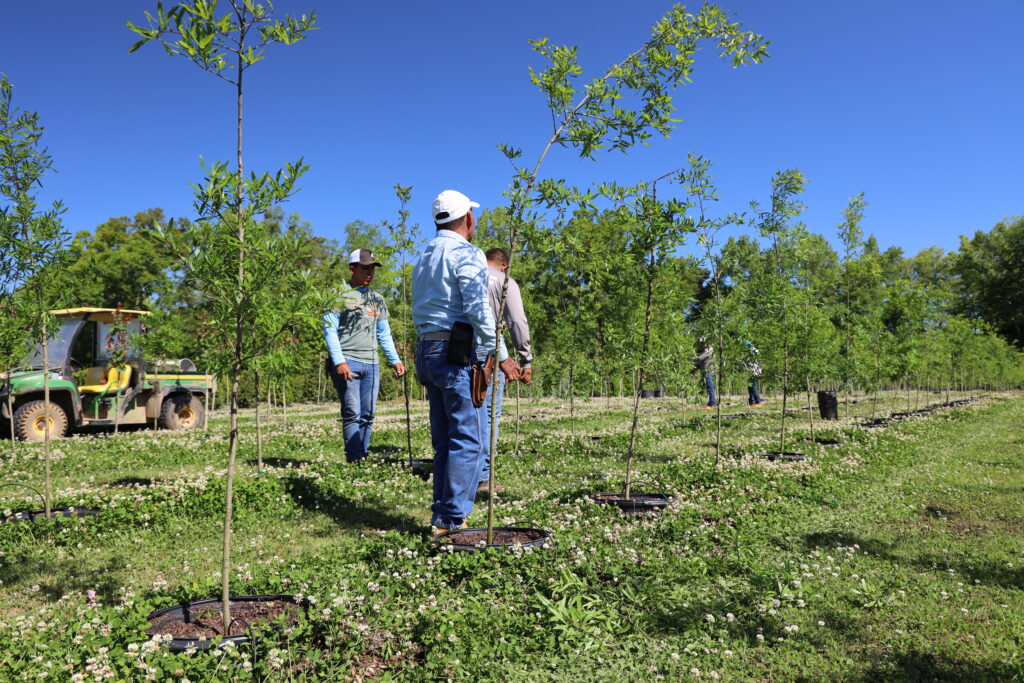Guest Workers Essential to Alabama Agriculture

By Marlee Jackson
Shouts of laughter blend with a medley of Spanish and English banter on a growing number of Alabama farms during busy seasons.
The lighthearted camaraderie is in sharp contrast to the dim future many farms face without the state’s 2,100 legal, seasonal guest workers.
“We wouldn’t have any help,” said Lance Byrd of Green Valley Farms in Montevallo. “We’d have to downsize, and we’d have to manage with the people we could get in a day and time where everyone is fighting for employment. This is a problem money does not solve because people don’t want to do the work.”
While agriculture is flush with advancements and automation, intense hands-on work is necessary for many commodities. The monotonous labor often dissuades American workers from staying on the payroll — or attempting the work at all, said the Alabama Farmers Federation’s Blake Thaxton.
“The jobs our guest workers do take incredible skill and stamina,” said Thaxton, who represents specialty crop and green industry farmers. “Our farmers count on these guys to help them deliver a quality product to customers, whether that’s freshly picked produce or ornamental plants.”

That’s particularly true for nursery and greenhouse agribusinesses like the Byrds’ in Shelby County.
Since the late ‘90s, the Byrd family has contracted with guest workers to pot, plant, prune and pack thousands of plants each year for their nursery. As the domestic labor pool shrank, the Byrds’ guest worker numbers grew. That statistic is reflected across America. National guest worker numbers more than tripled between 2012 and 2022, reaching over 350,000 last year.
But seasonal labor shortages aren’t a new problem.
Choices magazine, an agricultural economics powerhouse publication, reports agricultural labor scarcities reaching back to the 1940s. Federal program changes over the next four decades resulted in the 1986 Immigration Reform and Control Act, which divided seasonal guest workers into two categories — H-2A for agricultural work and H-2B for nonagricultural labor.
Before hiring H-2A guest workers, employers must prove the work is seasonal and that no U.S. workers are willing to perform the job.
The seasonal caveat is critical, Byrd said.
“There are four or five months where we don’t have as much to do because it’s not the growing season,” he said. “Guest workers help because we don’t employ them during the down time. That’s when they go back home.”
This year, 17 Mexican workers arrived in Montevallo in February and will work through December. Many of the Byrds’ tight-knit crew are return workers with years of Green Valley experience, including two who attended Renee Byrd Fochtmann’s wedding 24 years ago.
“These guys show up and are not afraid to work hard,” Fochtmann said. “They’re consistent. They learn their trade here, and they come back, and they do it year after year. They’re family to us. They’re invested in what we do.”

Labor shortages and a declining interest in agriculture among younger generations has caused row crop, cattle and catfish farmers to delve into the federal guest worker program, too. Alabama’s unemployment rate was 2.3% in March, lower than the national average of 3.5%, per the U.S. Bureau of Labor Statistics.
The COVID-19 pandemic heightened labor issues across the workforce. Nearly 3 million fewer Americans work outside the home since February 2020, the U.S. Chamber of Commerce reports.
The shrinking number of American workers underscores the H-2A program’s importance, said the Federation’s Mitt Walker.
“We’re not a huge state for H-2A, but those workers are critical to the Alabama farms where they work,” said Walker, who monitors national affairs, including labor issues, for the Federation. “Without a viable guest worker program, it would be difficult for our guys to stay in business.”
This is the first piece in a four-part series about Alabama’s need for guest workers. Read more in the September, November and March issues of Neighbors magazine.
